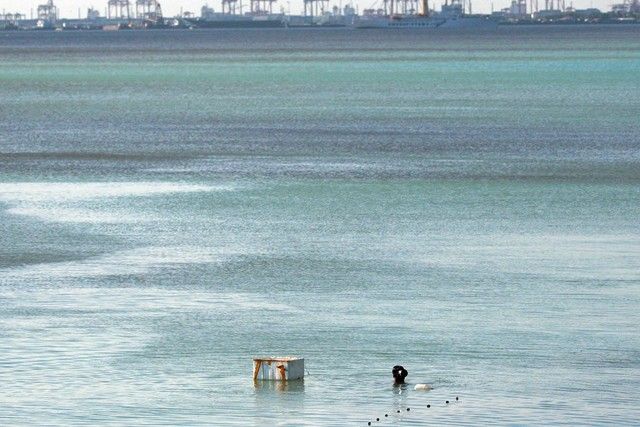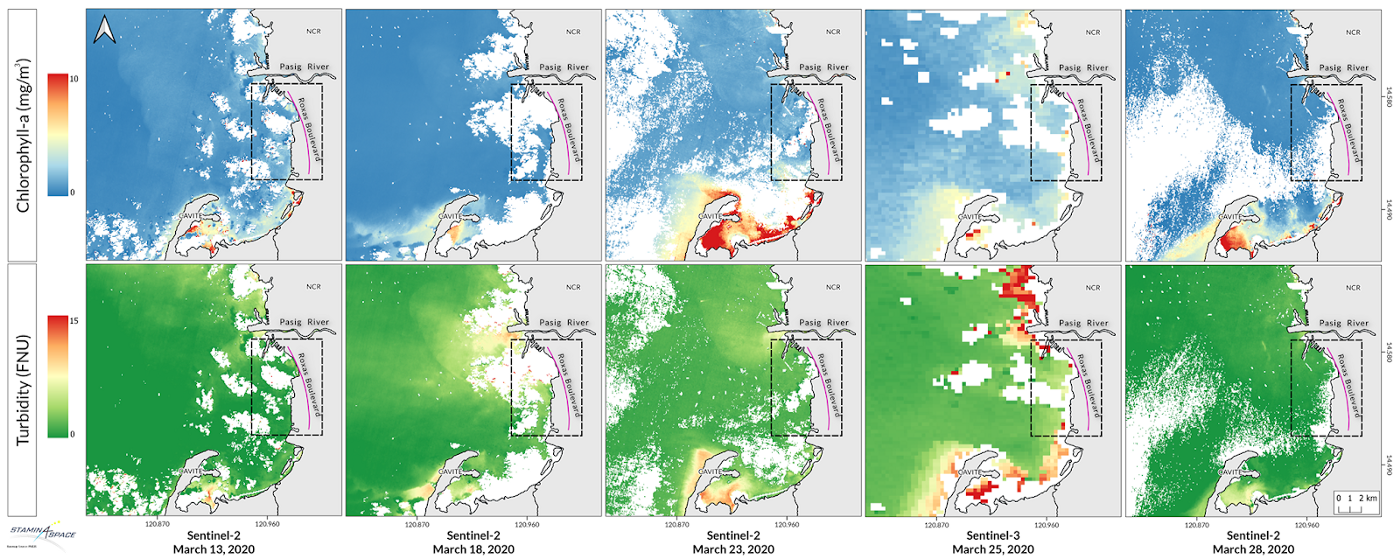Not 'healing': Satellite photos suggest pollution turned Manila Bay turquoise

MANILA, Philippines — The abrupt change in the color of Manila Bay's surface last March could be attributed to high water pollution, an analysis of satellite images showed.
Last month, photos and videos that showed Manila Bay’s waters turning turquoise went viral, with social media users attributing the change in color to the implementation of the enhanced community quarantine in Luzon.
But researchers from the Department of Science and Technology’s Sustained Support for Local Space Technology and Applications Mastery, Innovation and Advancement (STAMINA4Space) program said the turquoise waters of Manila Bay may suggest pollution.
Using satellite images from the European Space Agency’s Sentinel-2 and Sentinel-3, the researchers observed “relatively high” chlorophyll-a concentration and turbidity values in Manila Bay as early as March 23, with turbidity levels doubling up by March 25.
High water turbidity could indicate high water pollution, while chlorophyll-a concentration suggests algal abundance.
“Since chlorophyll-a levels did not increase significantly around Manila Bay, the change of water color could not be attributed to algal bloom,” the researchers said.

Areas in red indicate high values of chlorophyll-a concentration and water turbidity. STAMINA4Space
Pollution 'hotspots'
The STAMINA4Space researchers identified Pasig River and Bacoor Bay as “hotspots,” saying waters from these areas might have influenced the waters of Manila Bay depending on the direction of wind and the circulation of water.
“Pollutants from aquaculture, industry and commercial establishments contribute to the turbid waters of Bacoor Bay, while collective wastes from residential, commercial and industrial industries negatively impact the water quality of Pasig River,” the researchers said.
It was only on March 28 that significant decrease in chlorophyll-a and turbidity was observed.
Fishers group PAMALAKAYA earlier said that pollutant materials might have been dumped in Manila Bay.
The Department of Environment and Natural Resources launched an investigation into the sudden color change of the bay’s water.
Non-profit ocean conservation organization Oceana said Manila Bay is a principal fishing ground for sardines, mackerel, mullet, threadfin, bream, squid, blue crab, round scad and fusilier
The rehabilitation of Manila Bay kicked off on January 23 last year.
- Latest
- Trending
































